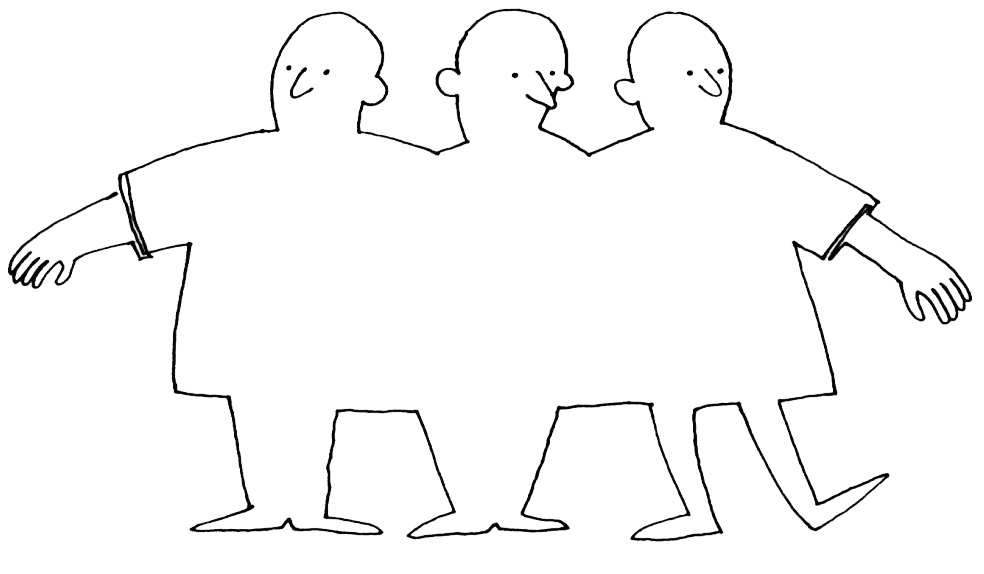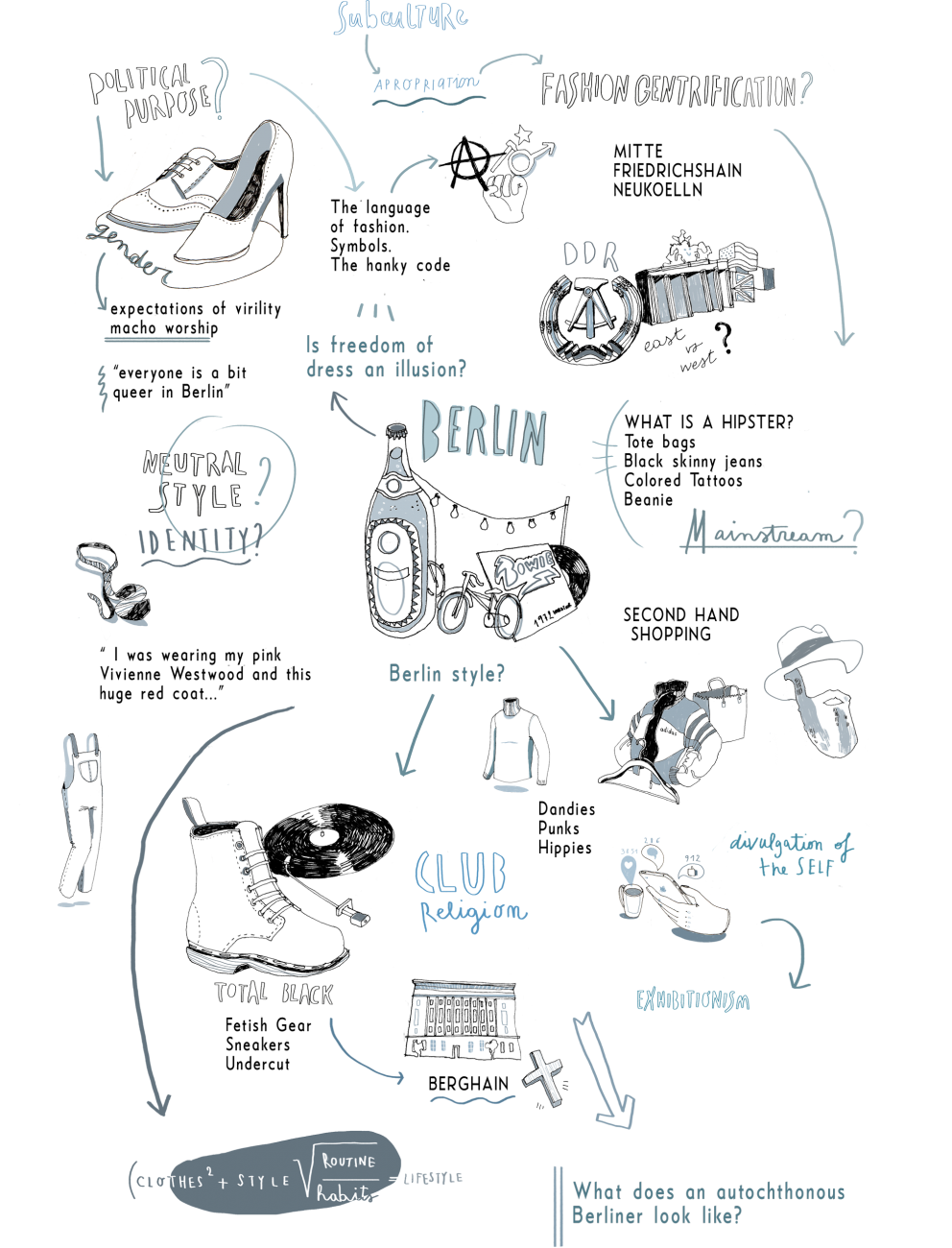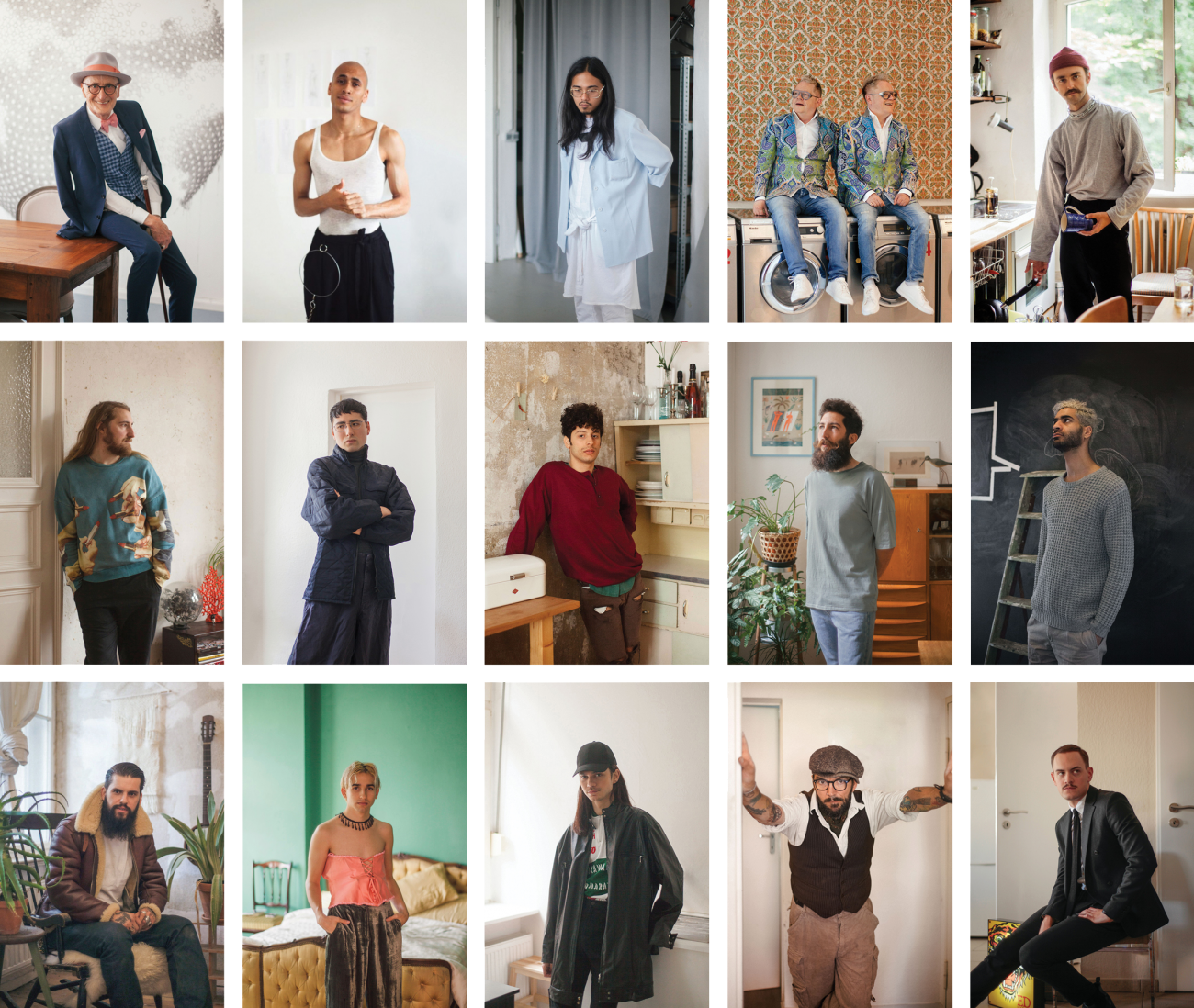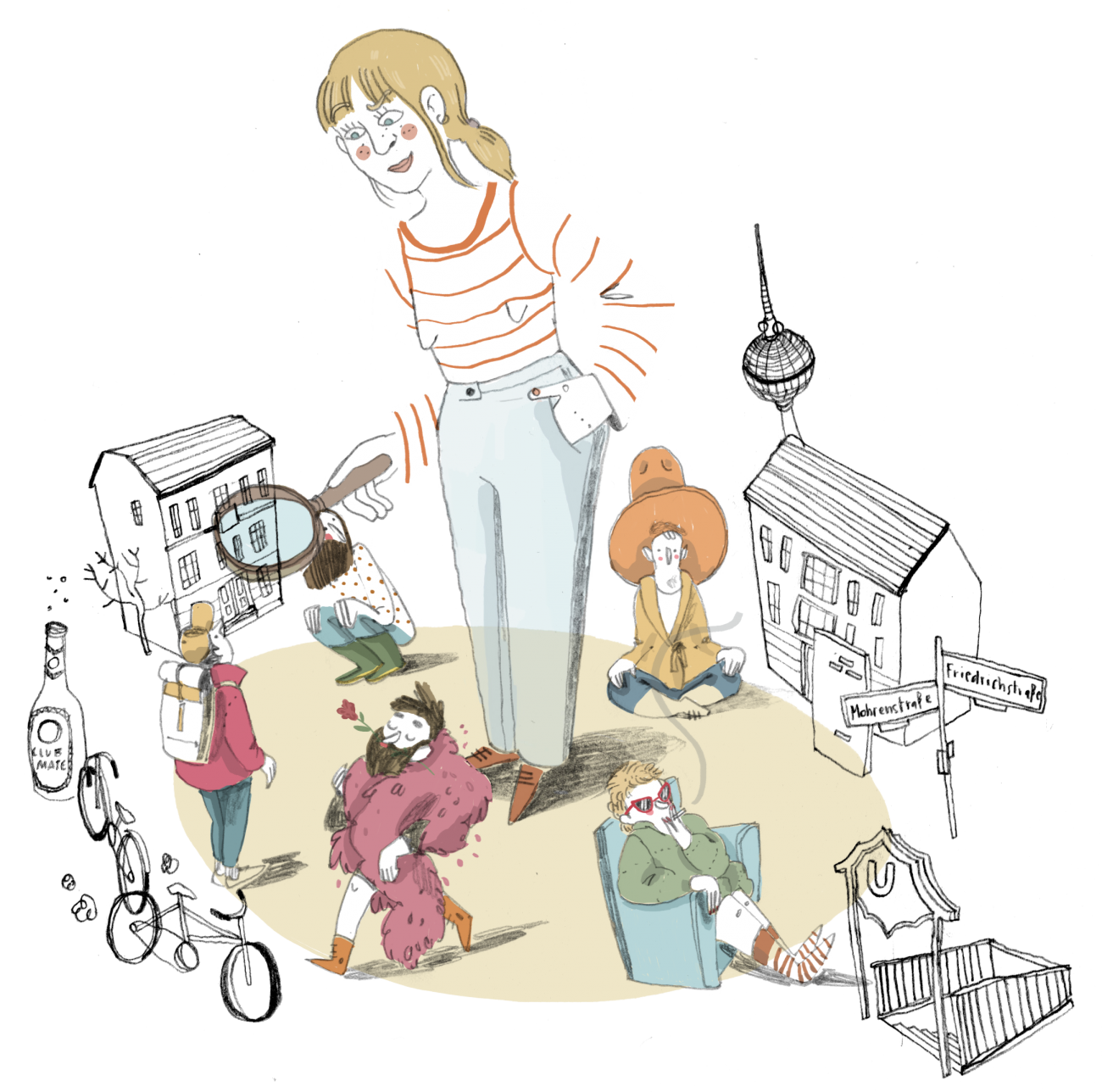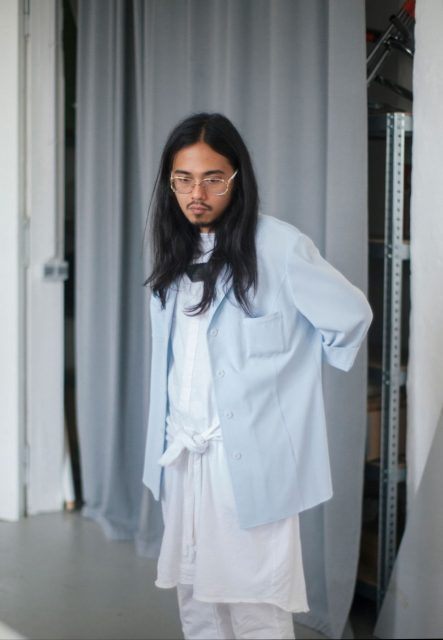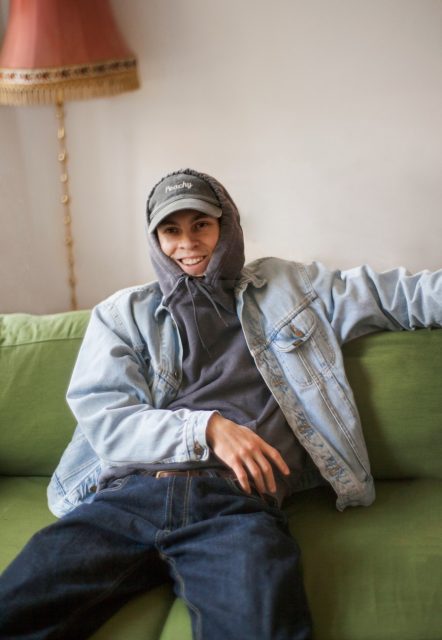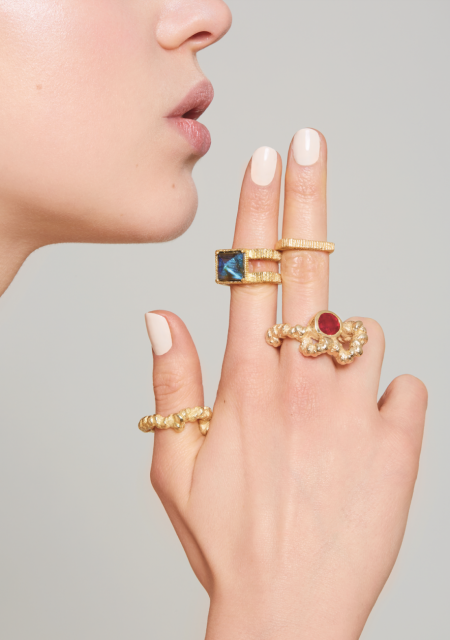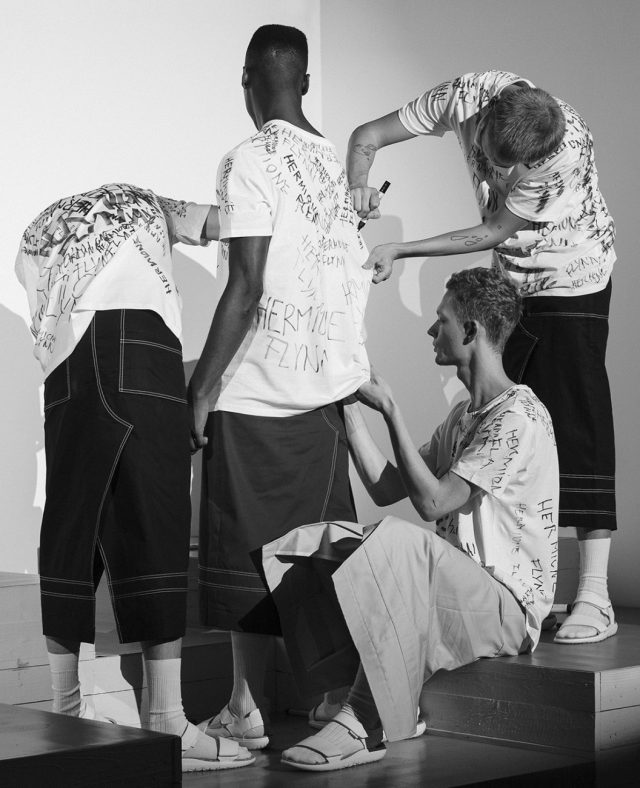By now, we’ve spent a great deal of time pestering men with our questions, wondering what Berlin style amounts to, and discussing what happens when fashion becomes display, self-expression, and a mask (J.C. Flügel)
Each and every “guy on clothes” was a revelation, each conversation an “Aha” moment. We talked to musicians, editors, and artists, cowboys, digital natives, and bloggers. We tried to consider autochthonous Berliners and passerby Berliners, the influencers and the influenced … We asked them about their habits, their wardrobes and their neighborhoods, what Berlin gave and took from them, all while looking for parallels and distinctive traits.
Today, however, we want to share our notes and stand back to take a look at the bigger picture—the premise being that behind the temporal sheen of “do’s and don’ts”, Guys on Clothes remains a case study with which we hope to someday uncover exciting perspectives .
No more then a year ago, our Introduction read, “In 2016 … men of all kinds participate in fashion to an extraordinary extent. As a result, the pragmatics of men’s clothes can be seen today as a great guideline and tool for the comprehension of a community’s cultural standing”. Fifteen interviews later, we still feel strongly about those guidelines’ potential, but we also witnessed how clothes serve as an alibi and starting point for the comprehension of different matters entirely. We are sure you noticed that we looked into dress and shopping criteria, but that our musings also touched on performativity, appropriation, gender fluidity, virility, uniforms, the notion of authenticity, and other fascinating subjects.
In the midst of this stream of sartorial consciousness a few compelling thoughts stood out.
We learned that clothes and communication are intertwined on many levels. For a start, there still seems to be a sense of male camaraderie by which the driving forces behind the process of getting dressed are “whateverness” and comfort. Misleading reactions to the question “What do you think about when you get dressed in the morning?” often included: “It’s not something I think about”, “I usually grab the first clean thing that is lying around”, and “I just look out the window to see what the weather is like”. The common misconception, here, is that men “just don’t care about clothes”. Of course this was never our thesis to begin with, but we still wanted to get to the bottom of the stereotype. We finally made sense of it, when an anonymous fellow suggested that, in reality, men are NOT less preoccupied with clothes; they simply aren’t used to talking about them. And how could they be? After all, until recently and throughout the entire twentieth century, clothes were socially reckoned with as female business. The birth of countless fashion magazines and fashion weeks dedicated to women was accompanied by the flourishing of a distinctive lexicon, while the gap between men and clothes, as a subject of interest and small talk on the other hand, grew bigger.
In Berlin, however, things are certainly changing for the better: the number of publications dedicated to men’s style is growing and questions regarding visual identity are slowly rising above gender criteria. In other words, men are again talking about clothes, and by doing so, one might say, they are taking back the right to care and express themselves through fashion. Awareness also runs along language. Articulating vestimentary concerns implies acknowledging those concerns and though this might seem obvious, when it comes to fashion, perhaps full-fledged comprehension starts with understanding the surface and critically confronting the obvious.
So far we have distinguished 1) clothes, 2) the way we talk about clothes, and 3) the resulting sensitivity. But during our encounters we were also inspired to consider clothing as a language in itself.
In fact, while most “guys on clothes” required some warming-up to answer questions about their own wardrobes, their disposition towards reading into and reacting to the appearance of others and making clear assumptions about their personalities—both on the streets and “on screen”—was hard to overlook … It seems as though, in Berlin—and in the age of smart phones and social media—visual self-expression has been forging new forms of interaction. As if, every time we sent or published a photo, posted an Instagram, Snap Chat story, or changed our profile pictures, we were also participating in a collective dialogue, expressing an opinion without actually raising our hand in class, coming out of the closet without making a speech, or communicating a mood without putting it all into words. The interaction runs along visual assets instead, and clothes deserve a spot in that league!
A guy on clothes told us: “Social media unite those to whom personal style is a cool way of celebrating freedom of expression” (Salome Mallari, Guys on Clothes). And could it be that freedom of expression and “freedom of dress” are becoming one and the same?
The tricky part is that, unlike words, clothing goes hand in hand with consumerism and mass production. When it comes to language, freedom of expression is also the freedom of inventing a word. We could, for example, easily come up with a new term to describe a mood or personality at a certain time—we are feeling kind of blah today—and eventually others would grow familiar with the notion. With garments, unless you are a designer, it is not as easy. In things personal style, we are bound to the designer’s vision and what’s available on the market, and despite the tremendous amount of combinations and possibilities, the freedom we enjoy is very different and only partial. “I suppose it’s about finding the overlap between the designer’s message and your own, and making something exciting out of it”(Kevin Meunier, Guys on Clothes). But does this mean freedom of dress must always embrace compromise? Rumor has it that individuality is the next big thing, and yet, in light of these thoughts, we can’t help but feel skeptical. How can we truly convey our singularity if the variables we depend on are imposed by an industry whose main interest arguably isn’t our freedom? Furthermore, now that individuality is “cool” (in Berlin status seems to run along the abstract value of “coolness” these days), we are headed down a rocky path.
The fashion industry feeds on our longings, makes them available and disposable on a large scale. Thus, when that longing is dandyism, the upshot is a big fat contradiction, and one that is tripping up our efforts of authentic individual expression. Roland Barthes already pointed out the tension when he described fashion as the collective imitation of regular novelty and individual expression, AKA “personality”, as a mass phenomenon …
But don’t worry. We don’t mean to get all dystopic quite yet. It’s too early to draw conclusions and even earlier to give up and dismiss the ideal of individuality. Earlier we said that men are conquering new horizons of fashion awareness, and we feel a little reassured in knowing that every time a choice is made, especially a conscious one, every time a man stands in front of a mirror contemplating what to wear and what not, there is also a reason for that choice … And maybe the key to decoding individuality, and setting solid foundations for freedom of expression through dress, lies somewhere in that pile of choices and reasons. We intend to keep digging: many interviews will follow and with them the chance to delve into different and hopefully enlightening perspectives.
